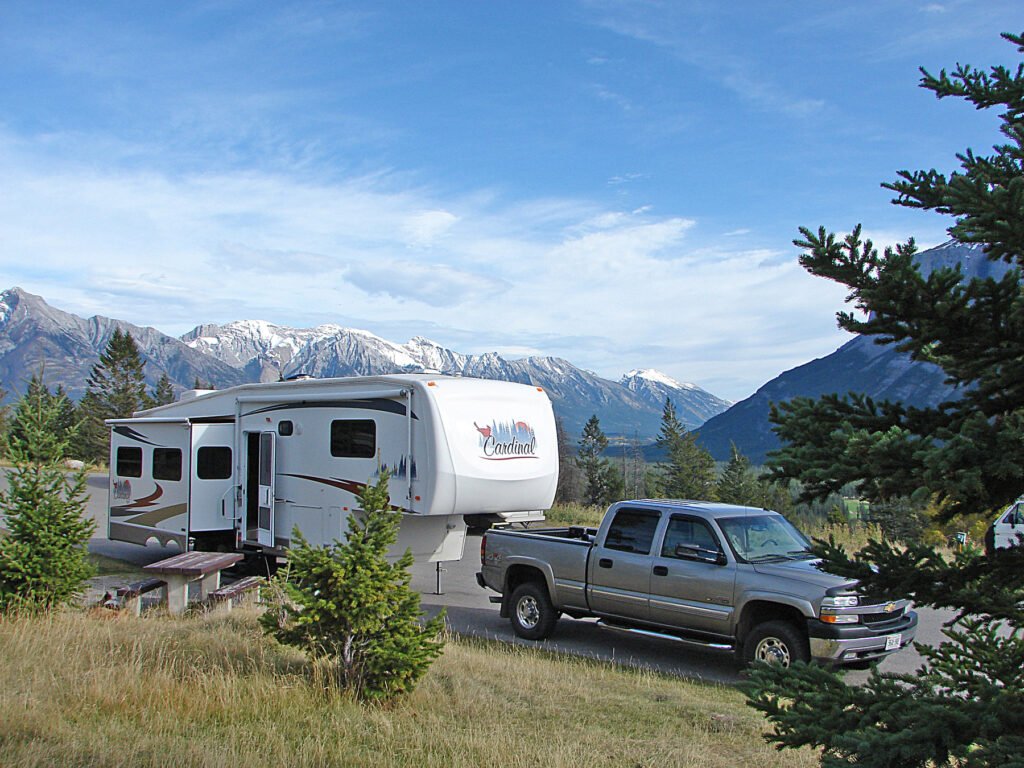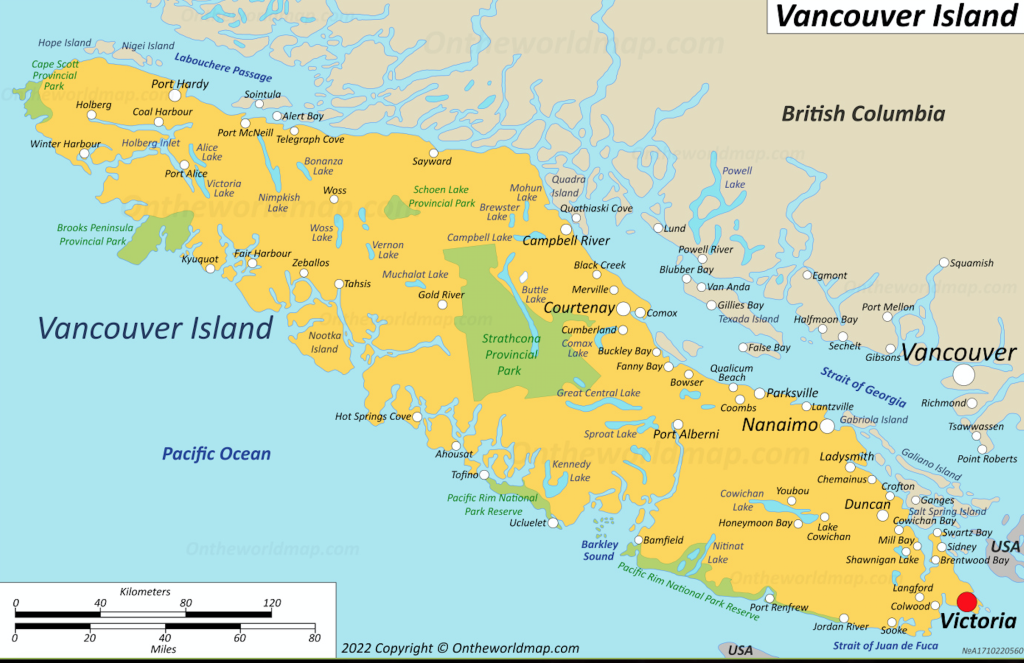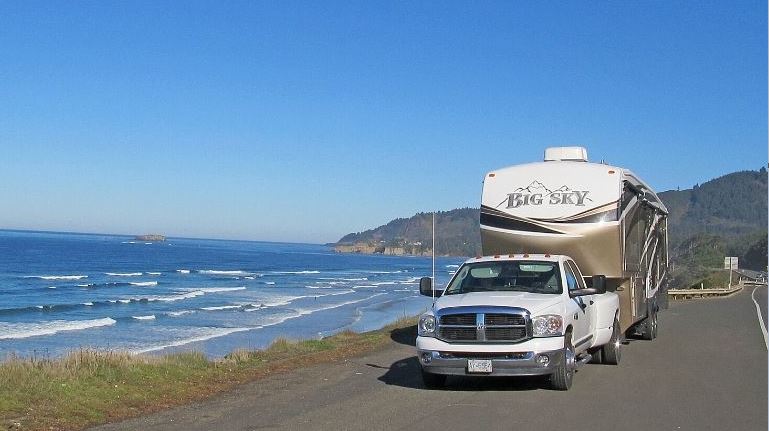our camper van was the last one onto the small ferry. It was a reasonably calm day—the waves of the Atlantic Ocean between North Carolina’s Hatteras Island and Ocracoke Island had the vessel bobbing lightly. But when you’re last on, the view out the back window is of water and waves, sublime.
The Outer Banks of North Carolina is a destination I head to when I need a breather. It’s there that the power and beauty of the sea and land merge, creating the intersection of awe meets relaxation. And while I love the arc of the three barrier islands at the northern part of the Outer Banks—Currituck Banks, Bodie, and Hatteras—it’s tiny Ocracoke, a ferry ride away, that speaks to my soul.
Travellers scan their maps, and that extra ferry ride keeps many from hopping to Ocracoke. Oh, if they only knew. As soon as that hour-long Hatteras Inlet gently slipped into the dock, I shifted to island time. It’s not remote, just detached. As the O’cocker islanders like to say, “If the world ended tomorrow, Ocracoke wouldn’t know for a week.”
Small but extraordinary—just 26 kilometres from one tip to the other—Ocracoke is a perfect snapshot of all that’s remarkable about this part of the coastline: choosing seafood for dinner right from the anglers, grand sweeps of secluded beaches that are perfect for strolling and shelling, an enormous fishing hole called the Atlantic Ocean, unique artisan shops, friendly locals, and a jet-black nighttime sky splashed with Milky Way stars sparkling right down to the horizon. There isn’t a single island stoplight, and you couldn’t get lost if you tried.
Rich with History
There’s history aplenty too. “It’s never been a fishing village, although people think of it that way,” explained Al Scarborough, a lifelong resident of the island. “The first settlers in the 1700s were the pilots who piloted schooners through the inlet. When the steam engine came along, goods could be transported up the coast, and the need for pilots decreased. People turned to subsistence fishing.”

With no land connection to the mainland, in days gone by, the locals had to be creative in managing the daily affairs of life on the little spit of land. Building materials were salvaged from shipwrecks. A walk along the back dirt laneways reveals an Ocracoke curiosity: the backyard family cemetery. There are more than 80 family cemeteries on the island, small, fenced enclosures where headstones mark ancestors’ gravesites. The custom dates back to colonial times, although the island has since developed a conventional burial ground.
On the outskirts of the village, the British Cemetery is the final resting place for four British sailors who lost their lives when their trawler was torpedoed in 1942 by a German submarine. The bodies washed ashore and were buried in this plot by the locals. Each May, a ceremony is held to honour the sailors and to hang a new Union Jack sent by the Crown.
The island’s Ocracoke Preservation Museum is furnished with island antiques and displays on the fishing heritage, decoys, the impact on the community of the Civil War, and the island’s distinct Ocracoke Brogue (a true mark of its unique and somewhat isolated culture).
With modern amenities like electricity, a reverse osmosis water system, and regular ferry service, tourists followed to find their little slice of solitude, fishing, beachcombing, birding, and an arts-rich community. In the 1950s, when the first car ferry was introduced, travel was not for the faint of heart. That first vessel transporting vehicles consisted of two planks nailed onto two rowboats.
An Age of Pirates and Privateers
In the 18th century, the merchant ships following the north-south current of the Gulf Stream were easy pickings, creating a golden opportunity for looting by pirates and privateers. The top of that list of scoundrels was the infamous Blackbeard. Ocracoke is where he met his demise in 1718 while anchored at nearby Teach’s Hole.
The North Carolina colonists were concerned that Blackbeard was slightly too comfortable dropping anchor and passing the time at the outlet. When the British Royal Navy finally cornered the pirate, he led them on a chase through dangerous shoals and shallow waters before being killed by fewer than five bullets and 20 sword wounds. Legend has it that the pirate’s headless body swam seven times around his ship. Locals doubt it could have managed more than two.
Just at the edge of the village, there’s a trail at Springer’s Point winding through an old maritime forest of bay trees, wax myrtle, and live oaks twisted by the wind. The pathway leads to the beach; the spot locals claim Blackbeard anchored while in the area.
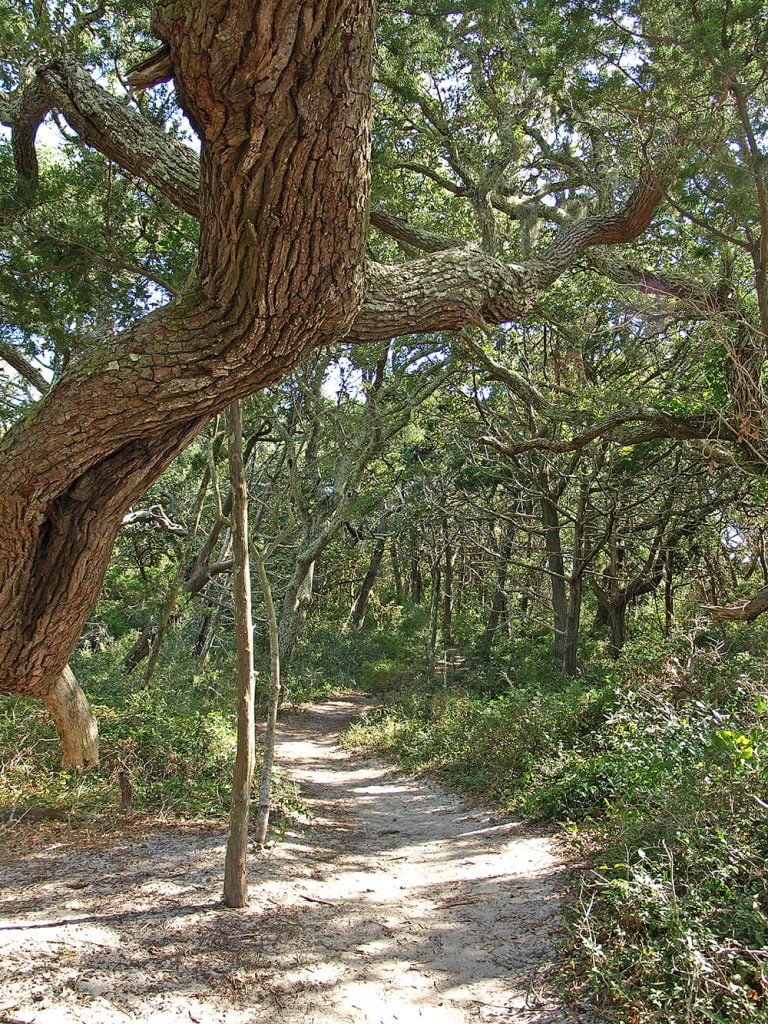
A short walk away is the island’s historic white lighthouse, built in 1823 and now one of the nation’s oldest beacons still in use. The light station still flashes a warning to ships that travel the stretch known as the Graveyard of the Atlantic, a nod to the thousands of shipwrecks over the centuries.

And the Long Stretch of Beach…
If for nothing else, I would come to Ocracoke for the pristine beaches. Each day begins with long walks on the undeveloped, unspoiled stretch of sand—shelling, splashing in the water, and looking for frolicking dolphins. During the shoulder season, other people were specks in the distance on most days.

We settled our RV into a site at the Ocracoke Campground, open year-round and part of the Cape Hatteras National Seashore. The campground has 136 sites—many are dune side, flush toilets, potable water, and cold showers. There are no hookups, but there is a nearby dump station. There are several private campgrounds on the island that do offer full hookups.
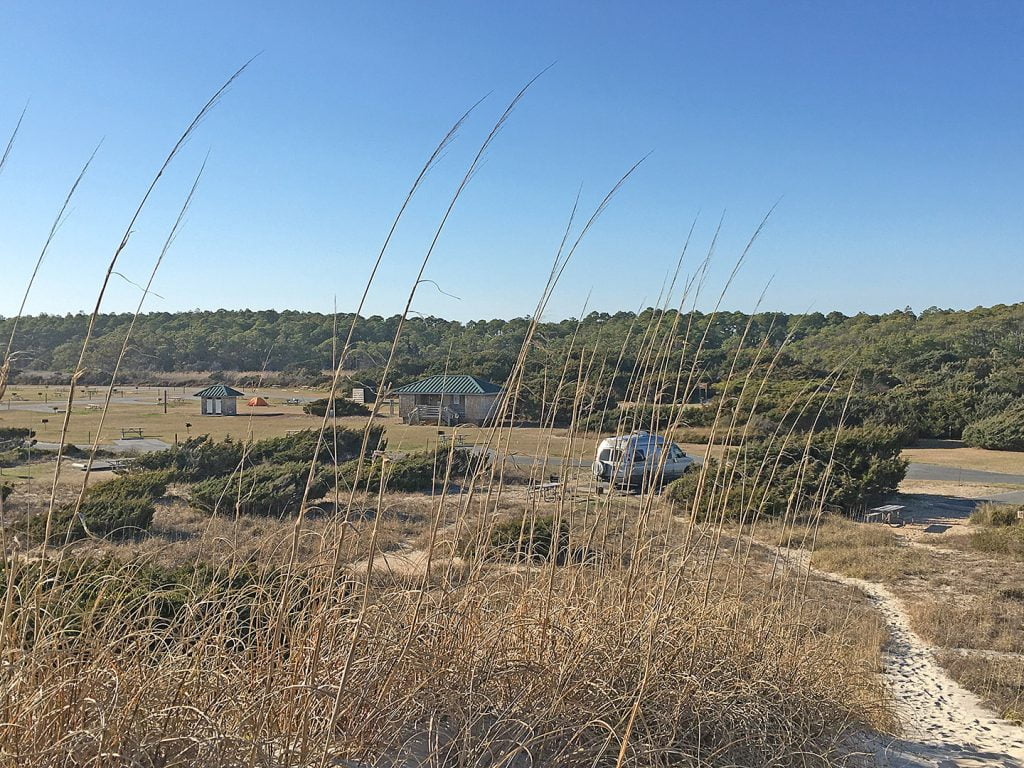
When leaving Ocracoke—if we’re last on the ferry again—I am reassured by that back window view over the water and the waves. Somehow, it helps keep me connected to that special place that soothes my soul.
Travel tips for Ocracoke:
- The two ferry routes—Hatteras-Ocracoke and Ocracoke-Cedar Island—are officially part of the Outer Banks National Scenic Byway. The ferry from the north has no charge; the larger ferry from the south has a modest fee.
- The Ocracoke Historic District is listed on the National Register of Historic Places.
- Mosquitoes love the dune environment. Best to have bug spray packed.


